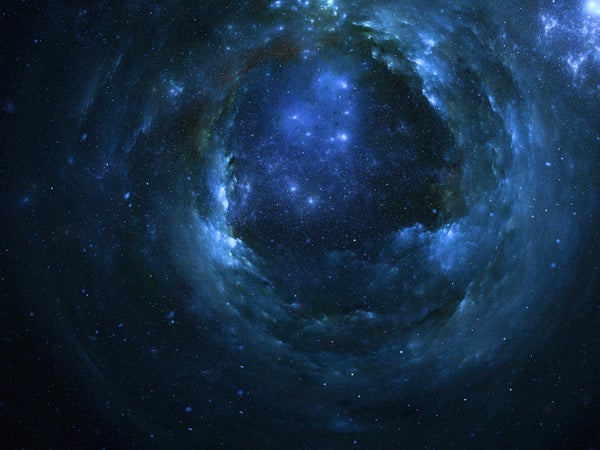This Equation Shows That the Universe Will Run out of Stars
The cosmos is dark. The Lilly-Madau diagram reveals that it will become much darker still
What makes the dark universe brighter—at least in certain places—is the light of the stars. But they were not present from the beginning. Once, there must have been a time when not a single star shone in the universe. Later lots of stars formed in many galaxies. And after that, old stars have gone out or exploded, and new stars have emerged. But what does this cycle look like long-term and on a cosmic average? Do the stars become fewer and fewer over time?
It turns out there is a formula that can show physicists the broad picture of star formation rate over time:

On supporting science journalism
If you’re enjoying this article, consider supporting our award-winning journalism by subscribing. By purchasing a subscription you are helping to ensure the future of impactful stories about the discoveries and ideas shaping our world today.
In this equation, ψ denotes the star formation rate as a function of the redshift z. Let’s break some of that down.
Since the early 20th century, scientists have known that the cosmos is expanding. This means that distant galaxies are moving farther and farther away from us. As a result, the frequency of light is shifting and becoming redder. The stronger this so-called redshift is, the longer the light has been traveling, and the further into the past we can look. This is extremely practical because otherwise we would have no chance of determining the star formation rate in the past.
Of course, we cannot directly observe how stars form or disappear in galaxies that are billions of years old. But we can, for example, measure the amount of ultraviolet light that reaches us from those stars. Because young stars are hot, they shine particularly brightly in this wavelength range. The measurements are very complex, but with indicators such as UV light, we can get a good idea of how the rate of star formation has changed over time.
Astronomers Piero Madau and Simon Lilly first put this idea into practice in the 1990s. If you plot the corresponding data—redshift z and the associated star formation rate ψ—in a diagram, you get a curve that is described by the equation above.
Welcome to the Cosmic Afternoon!
This so-called Lilly-Madau diagram revealed that star formation increased very rapidly in the early days of the universe and reached a peak some two billion to three billion years after the big bang. This summit of the curve—a period when most galaxies and black holes formed—is called “cosmic noon.” (The period before it is called “cosmic dawn”).
But cosmic noon came to a close about eight billion years ago. Since then the average star formation rate has continued to fall slowly. We live in what could be called the “cosmic afternoon,” and we are heading towards a “cosmic evening.” (Though some scientists think it’s already cosmic evening.) At some point in the very distant future, there will be no stars shining in the universe at all.
New observations show that the picture is perhaps even more complex, however. If we look at a Lilly-Madau diagram that includes only the galaxies in our local universe— an area of around 35 million light-years in diameter around our Milky Way—it differs significantly from the curve obtained from data for the entire cosmos.
The star formation rate decreases much more slowly in our little corner. Measurement errors could be responsible for this discrepancy. Or—and this would be the more exciting possibility—the universe might not be quite as homogeneous on large scales as scientists have assumed. If there were regions in which matter was more or less densely distributed, such variability would also impact the rate of star formation.
More evidence would be needed to be confident about that idea, however—particularly because this hypothesis contradicts the cosmological principle, which presupposes the homogeneity of the universe. Whatever the case, the good news is that the cosmic afternoon will last a long while—about 100 trillion years by some estimates. And our closest star, the sun, has about seven billion or eight billion years left. Either way, that should give our species time to find a solution before the coming darkness.
This article originally appeared in Spektrum der Wissenschaft and was reproduced with permission.















